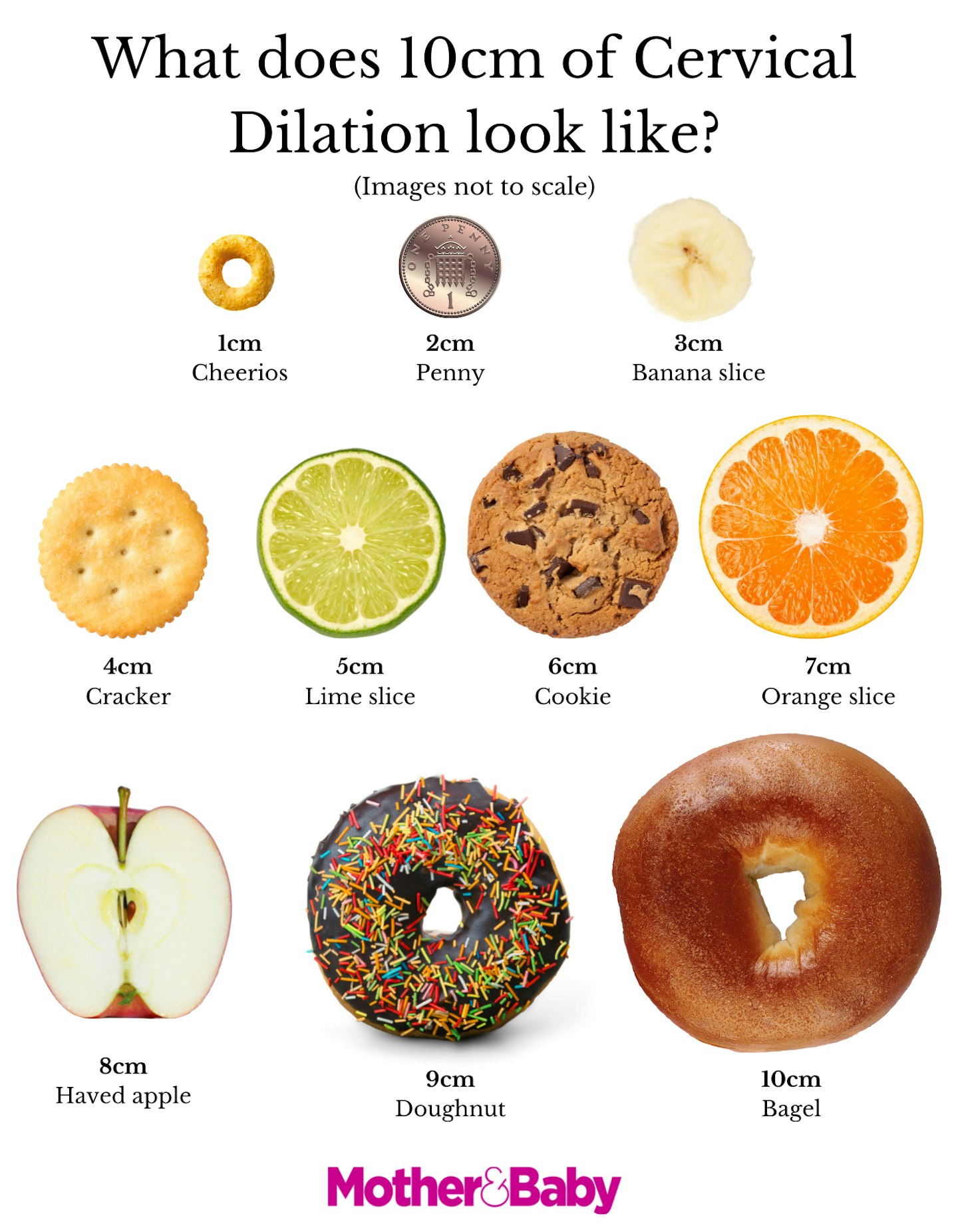Backache. Waters breaking. Contractions. These are all signs that labour is starting and labour dilation is happening.
You might have made your birth plan and once the big moment has arrived, you’ll discover that every labour is different – and rarely go according to plan. But yours should, at least, follow a predictable pattern.
Your baby is on their way, but there’s still a little way to go before you (finally) meet your newborn. To learn more about labour dilation and the different stages of your labour, we spoke to Lesley Gilchrist, registered midwife and co-founder of My Expert Midwife who has all the expert advice on the role of the cervix and labour dialation and birth.
What is labour dilation?
First things first, we're all different, and so are our cervixes. “Our cervixes are unique to us and as such behave very differently from one woman to another," explains Lesley. "You may have one which dilates quickly or one that takes its time. Try not to judge your labour against how other people labour. No way is the ‘right’ way, your body will find its own unique way to birth your baby.”
Your cervix is firm, long and closed before labour and birth and feels a little bit like your nose. It needs to start to soften and usually shorten to be able to open more effectively. This happens differently for every woman but an average is assigned to this as around 0.5-1cm per hour for first-time mums.
“If you have had a baby before it is likely that your labour can be faster and/or more unpredictable. For example, it can be common for a vaginal examination to show you are 2cms dilated and shortly after you want to push and your baby is born! Equally, if contractions tail off you may be waiting a while, even a few more days, for your baby to arrive” says Lesley.
How is the cervix checked for dilation?
A vaginal examination will be offered to you during labour every few hours to assess how many centimetres dilated your cervix is. It should be discussed with you so you can give consent. It involves two gloved fingers being inserted into your vagina gently, using lubricated gel, so your midwife or doctor can feel your cervix. This can then provide you with baseline information on how your cervical dilation is going and any further examinations can determine if there have been any changes to your cervix.
"A vaginal examination not only gives information on how dilated you are, but how effaced your cervix is (this is the cervix shortening and softening). If your cervix is dilated enough it can also provide you with information on your baby’s position too.”
If your baby is full term your cervix needs to dilate to around 10cm to be fully dilated and open enough to let your baby descend into the birth canal (the vagina).
Stage one of labour dilation
There are two main phases in this stage of cervical dilation, the latent phase and the active phase. The latent phase is the time from the onset of these contractions until your cervix has dilated to 4cm. The second part of the first stage is the active phase, which is the time that involves your cervix dilating from 4cm to fully dilated, which is around 10cm.
The first stage often lasts between 10 and 12 hours on average. Your early contractions at this stage may feel like period pains and are not normally too uncomfortable. But as they build they’ll last longer and feel much stronger – you can take some pain relief such as paracetamol or a TENS machine, to help ease your discomfort.
Try to stay as active as possible during the early part of this stage. Most women find they are more comfortable staying at home for a few hours, but it’s best to call the hospital or your midwife who can advise the best course of action.

Once you arrive at the hospital, your midwife will give you an internal exam to check how dilated you are – once you’re 4cm or more you’re in active labour and will be taken to the ward to have your baby. This is when you’ll start to decide whether you want labour pain relief.
During this stage the muscles in your uterus contract to open your cervix (neck of the womb) so your baby can start making their way through.
A guide to labour dilation
Your cervix dilating (opening) is the most common way that your midwife will track how your labour is progressing. Throughout labour, your cervix will - believe it or not! - gradually open to allow the passage of your baby's head into the vagina. This is around 10cm dilated for most babies.

Transition
Some women may experience a transition period between stages one and two of labour, where contractions get very intense, as their cervix becomes fully dilated.
It is common for women to switch off and lose focus of their surroundings during this stage. But, although this can seem like the hardest part of labour, making you feel shaky, nauseous and panicky, it’s usually the shortest stage – often lasting only 15 to 20 minutes.
According to Lesley, the end of stage one is often what mums find most difficult. "There is a point at the end of the first stage of labour called transition. This is where many women feel overwhelmed and say things like they want a caesarean, an epidural, to go home or that they can’t do it. This is a good sign as it usually indicates birth is imminent. With good support from their birth partner and midwife, this feeling passes after about 20 minutes and the second stage begins."

Your baby‘s head is starting to descend now, so you might even feel like you’re going to do a poo but don’t worry, this is normal and is actually a good sign. You might also feel the urge to push, but try not to as it’s still too early as you’re still not fully dilated.
At the end of the transition, the first stage of labour is over, and once it’s finished you’ll be fully dilated (10cm) and ready to push.
Stage two of labour dilation
The second stage of your labour often lasts between one and two hours although some take just minutes!
If you feel like you need to push, tell your midwife. It’s important she can ensure you’re fully dilated first, as doing it prematurely can increase the risk of tearing your cervix.
"The second stage of labour is when the cervix is open enough for the presenting part of the baby (their head or bottom) to descend into the birth canal, and for baby to move down and be born. During this time most women will feel a lot of pressure in their bottom and the urge to push. It can take a few hours for baby to move down and be born, especially if it is your first baby. If it’s not your first baby it is usually shorter, sometimes only minutes before baby is born."
Staying in an upright position is often best at this stage, so gravity can help your baby come down the birth canal. But listen to your midwife’s advice to know exactly what’s best for you.

Finally, the moment you’ve been waiting for after nine months of expanding waistlines, weird cravings and those pesky pregnancy mood swings – it’s time to meet your baby. Once you’re fully dilated, your baby will move down the birth canal. Eventually, their head will crown and you can even reach down and touch it.
Once the head and shoulders are out, it won’t be long until the rest of them is too, and you’ll be able to cradle your baby in your arms for the first time.
Stage three of labour dilation
Even though you’ll be holding your precious bundle in your arms by now, labour’s not quite over yet. Welcome to the third stage of labour.
It’s time to deliver the placenta. You might feel contractions as this happens, and they can be quite powerful but don’t worry, this is normal. It’s also common to feel shaky because of the change in body temperature and loss of fluid, as well as the sheer effort of childbirth.
"The third stage of labour is the birth of the placenta, after baby has been born. The cervix closes a little but remains partially open to expel the placenta. The placenta is soft, without bones so is easier to birth than the baby," says Lesley.
Delivering the placenta can take between five minutes and one hour and you can get a syntocinon injection to speed up the process. Don’t worry about any more pain though, most women don’t notice passing the placenta at all. Plus, you’ll probably too busy staring at your gorgeous little one to notice.
Fourth stage of labour
Now baby and placenta has been delivered, you'll be entering what is known as the fouth stage of labour, aka the postpartum period where your body continues to go through changes now baby is born and you start to recover from your life-changing experience. Take things as slow as possible and be kind to yourself as you navigate the fourth trimester and life with your new family.
About the expert
This article contains expert advice from registered midwife and co-founder of My Expert Midwife, Lesley Gilchrist. With extensive experience as a labour ward co-ordinator and as a community midwife, Lesley brings her expertise in pregnancy, postnatal, birth and the birth process to Mother&Baby to keep you informed and empowered.
